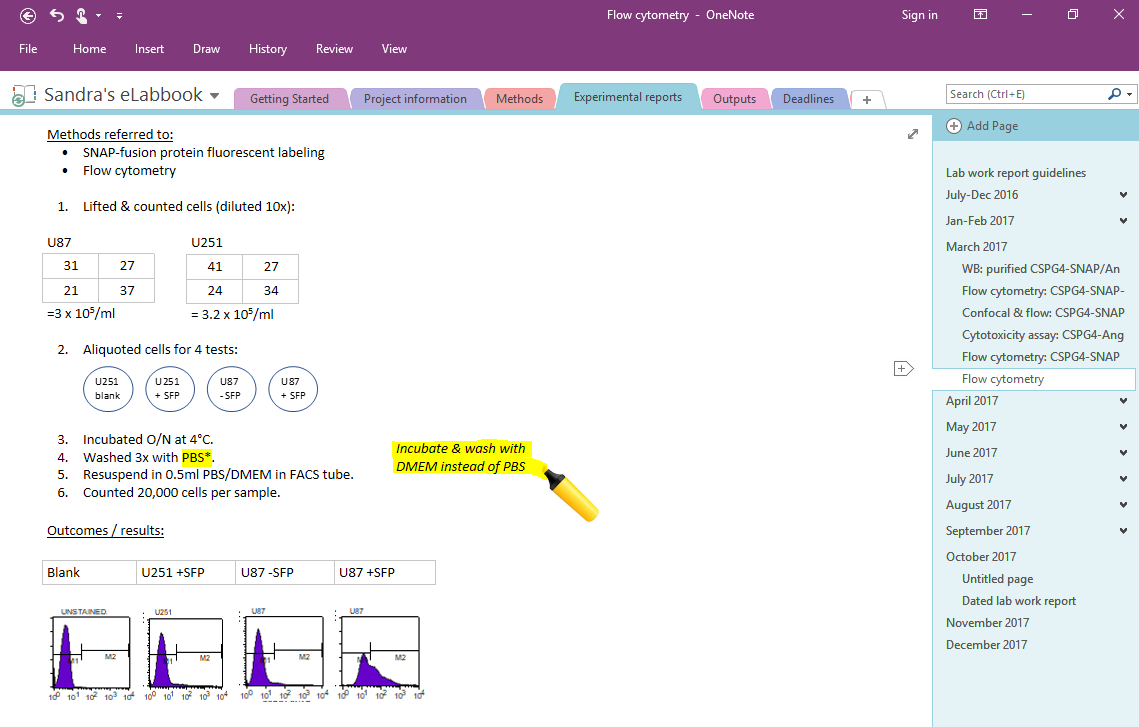Research laboratories go paperless
21 December 2017 | Story Lisa Boonzaier. Photos Supplied.
When Professor Stefan Barth – Department of Science and Technology/National Research Foundation South African Research Chair in Cancer Biotechnology – moved his laboratory to UCT from Germany two years ago, he envisioned a place where the knowledge shared between himself and his laboratory members would be contained in a secure, persistent digital repository.
He also required a solution for an electronic witnessing system to verify and record – in an unalterable way – the laboratory’s activities related to intellectual property, as well as a way to allow laboratory members to share access to the costly software programs they use for interpreting data. UCT eResearch was able to support Barth and help make his vision a reality.
A repertoire of methods
Barth’s research centres around the development of recombinant proteins – proteins made from a combination of genetic code from different organisms – that can be used in the diagnosis and treatment of disease. The techniques, protocols and novel products created in his laboratory are potentially patentable; patenting procedures benefit from evidence in the form of meticulous record-keeping and verification of the activities taking place in the lab.
“The documentation of all the experiments related to this repertoire of methods becomes very, very important,” explains Barth. “It is important not only for following up at a later date on what’s been done, but for controlling the quality of the work and the details of certain experiments.”
Traditionally, scientists, engineers and technicians have used paper-based lab notebooks to keep track of the research, experiments and procedures they perform. These documents – contributed to on a daily basis – may serve as legal evidence in court, or during patent prosecution and intellectual property litigation.
But it’s easy to imagine how such a paper-based system could be limiting. “It’s a matter of keeping track of the many lab notebooks written by each student, and storing them safely,” says Barth. “But once you have a number of students working on different types of projects, finding the data for a certain experiment in this paperwork becomes a challenge.”
These obstacles presented Barth with an opportunity for a solution beyond the capabilities of the current system. Barth’s goal was to take the record-keeping function of lab notebooks, make it digital, and integrate it with systems for storing and backing up the notebook data, and for indexing and searching, collaborating and witnessing; as well as for data storage, interpretation and visualisation – thus providing so much more than paper notebooks do.
At the time that Barth was grappling with these ideas, he started discussions with the team at UCT eResearch. He wanted to know: which was UCT’s preferred option for electronic lab notebooks? “And we went into a panic,” explains Ashley Rustin, a senior technical specialist at UCT eResearch, “because UCT was still using paper-based lab books.”
Software and servers
In response to the request, eResearch conducted a survey to assess the software packages currently in use for e-lab notebooks. They found that researchers’ preferred option was OneNote, a Microsoft application already freely available to the UCT community under the Microsoft suite site licence.
OneNote is versatile: it allows researchers to take notes, both handwritten and typed. They can do drawings, capture imagery, record audio and attach raw data files. It also has powerful collaborative tools.

As it stands, the Barth laboratory has access to a server based at UCT’s Information and Communication Technology Services (ICTS) that runs OneNote, as well as other specialised licensed software. They have sufficient storage space that the complete work and documentation for each student can be kept there. They have also set up templates in OneNote for their e-lab notebooks, which are shared via the server.
They are still setting up a method for witnessing and for archiving permanent files, in the form of PDFs, in a separate storage space. “This hasn’t been solved at this stage, but it’s just a matter of time,” he says.
Realising the concept of a paperless lab may seem a long way off, but the technology is available now, and UCT eResearch is helping to pave the way for researchers who are going digital.
To share information more widely about the e-lab notebook solution that Barth and UCT eResearch developed, Research Contracts and Innovation joined with them to run a seminar in two parts: an overview of OneNote and its features, and feedback from the Barth research group on its implementation in their laboratory. Anyone in the UCT community who is interested may access the presentation slides and video recordings of the seminar via its Vula site, ‘Electronic Lab Notebooks’.
 This work is licensed under a Creative Commons Attribution-NoDerivatives 4.0 International License.
This work is licensed under a Creative Commons Attribution-NoDerivatives 4.0 International License.
Please view the republishing articles page for more information.
Research & innovation





































